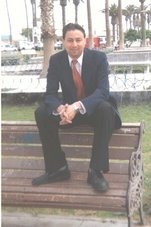Lesson 29: Unit 58
MYSTERIES
David: Today we look at
mysteries; things that we can’t explain.
Kevin: And we talked to this man;
Rick Turner, an archaeologist who will try to explain the mystery of a
two-thousand year old man.
Natalie: There are so many things
that we can’t explain. Do you know Stonehenge? It’s a huge and very old stone
circle in the south of England. Some of its stones came from 300 kilometres
away. And that’s one of the mysteries about Stonehenge: how were those huge
stones brought there? Do you know, David?
David: No. No idea.
Kevin: They might have come by
boat.
Natalie: Perhaps. And what about
the Marie Celeste?
David: The ship?
Natalie: Yes. In 1872, a ship
called the Marie Celeste was found in the Atlantic with nobody on board. The
question is: what could have happened?
David: I suppose pirates could
have attacked it.
Natalie: Mmm, maybe. And what
about the dinosaurs?
Kevin: What’s the mystery about
the dinosaurs?
Natalie: Well, they lived on
Earth for 150 million years. Then they disappeared, quite suddenly, Why?
David: Perhaps there was a change
in climate.
Kevin: or there may have been a
natural disaster, like a great flood or on earthquake…
Natalie: It’s a mystery.
They might have come by boat.
|
Pirates could have attacked it.
|
There may have been a natural disaster.
|
David: Why do you think the
dinosaurs disappeared?
1.
The dinosaurs probably disappeared because their
environment changed, and they were unable to cope.
2.
I believe there are many theories as to why the
dinosaurs disappeared. I think volcanic activity is one possibility.
3.
I like the catastrophe theory that a big meteor struck
the Pacific Ocean and through the world into darkness.
4.
I think the dinosaurs disappeared because there was a
massive ice age and they didn’t survive the massive ice age.
5.
Oh! I believe dinosaurs disappeared because they were
hit by an asteroid.
Holmes: Oh! Well Watson how did
the thief entered the room?
Watson: Through the window,
Holmes. Look.
Holmes: Mmm. That’s not very
likely ableton.
Watson: Why not, Holmes?
Holmes: Because the broken glass
in on the outside. The thief must have gone out through the window. He or she
must have come in through the door.
Watson: Holmes, you’re brilliant!
Holmes: Not really, Watson, just
intelligent. Come on! Let’s go and find our thief.
The thief must have gone out through the window.
|
He must have come in through the door.
|
Lindow man: Rick Turner;
archaeologist
Lindow Moss
|
Peat
|
Lindow Man
|
Rick Turner: Story begins in the
peak depot which just off the site where we’re standing. Where the men one day
found what turned out to be a well preserved human foot. I got to hear about
this as the local archaeologist responsible for the area and came out the next
day out under the bog just behind where is standing and found what turned out
to be the rest of Lindow Man.
We came here and what we
excavated was the peat in which the body lay we didn’t at that stage want to
uncover the body so we when we came here, we actually lifted a block of peat
and we weren’t exactly certain or what might have been in there.
What survives is… not everything.
What survives are particular types of robust tissue. You have the skin, the
hair, the fingernails, the parts of the bone that are tissue: not made of
calcium; so you only have a percentage of the body surviving. But they’re the
types of body which under other circumstances you would not normally find. And,
as a result, you can tell all sorts of things about the body that in other
circumstances you would not able to do. We could see exactly We could see
exactly what he looked like: the fact he was bearded: the fact his hair was
neatly trimmed, perhaps with a form of shears rather than scissors (it was
before scissors were invented). We found evidence of the stomach; and the
remains in the stomach tell us what he
might have eaten for his last meal or his last two meals, so we could
reconstruct that very accurately.
The evidence for how Lindow man
died is very clear. And you can reconstruct the events quite closely, what seem
to have happened first is that from the two fractures that we found on the top
head. It seems that he might have been hit by an axe or a weapon of some sort
that certainly made him unconscious and perhaps killed him. Not happy with
that, the people responsible then tied a strong cord around the neck; tied at
the back of the neck, perhaps inserted a stick through the cord twisted the
stick until the neck was broken and the breathing cut off.
Finally from the eighth from the
evidence of our cut underneath the neck we think he might have been bled and the blood would have poured
forth from the body onto the ground. So we have a very complicated and perhaps
rich elastic.
From all the evidence we’ve been
able to gather the scientific analyses and the detailed tests and the studies
we’ve made we can begin to build a picture of. Who Lindow Man was, how he lived
and how he died? He was a man, we know that for certain. He was perhaps 25, likely
to be of medium build.
He must have been someone who
didn’t work in the fields at the end of his life: he had beautifully smooth
fingernails. He might have been a bard, or perhaps a warrior, or even a priest.
He might have been the victim of
an attack: someone might have killed him and chose to bury him in a peat bog so
the evidence would never be found. It’s just possible he might have died in
some accidental way, and the wounds were caused by a variety of other
incidents: an attack by foxes or something of that sort. Or given the very
complicated nature of how he died, the fact he was naked when buried, you might
try to explain it as some form of ritual. But there are many forms of ritual,
and you’ve got therefore to take the evidence further. Perhaps the ritual is
religious. It might have been a civil execution, perhaps for some form of crime,
or perhaps a prisoner who was being killed.
So that from the evidence we have
you can build a wide variety of explanations and we our job is to try and way
that evidence and suggests which is the most likely.
He can’t have worked in the fields.
|
He must have worked with his head.
|
He might have been a poet.
|
He may have been a warrior.
|
He could have been a priest.
|
First of all he must decide what
date he might have died. We think it’s most likely that he was iron age, or
died and the just after the Romans had invaded. If so he was Celtic, he was a
member of a Celtic try. Who would have lived here in Cheshire at the time. The
Celts had a priestly class called the Druids, and we know from classical and
descriptions that the Druids indulged in human sacrifice. Lindow Man,
therefore, might be the results of one of these sacrifices. As this phenomenon occurs widely over Europe,
this particular time I think we’ve got to look at some sort of religious
practice. That leads to these bodies being found in the peak bulbs, in not only
here, but in countries like Germany, Denmark and Holland.
We can reconstruct his appearance
very accurately. We have a face from the past that we can look at and see that
perhaps the past is not so far from our present time, and that he looks much as
you and I do. And he would have been walking here around 2000 years ago. He
almost certainly comes from the local area. Why he came to be in the bog is the
mystery that everyone can speculate about.
WORD BANC
|
Asteroid
|
Asteroide
|
Dinosaur
|
Dinosaurio
|
|
Attack
|
Atacar
|
Disappear
|
Desaparecer
|
|
On board
|
A bordo
|
Disaster
|
Desastre
|
|
Catastrophe
|
Catástrofe
|
Flood
|
Inundación
|
|
Catch/caught
|
Tomar/tomado
|
Ice age
|
Período glacial
|
|
Climate
|
Clima
|
Massive
|
Grande/gran
|
|
Cope
|
Hacer
frente a/enfrentarse con
|
meteor
|
Meteorito
|
|
Deduction
|
deducción
|
Pirate
|
Pirata
|
|
Sink/sank
|
Hundir/hundido
|
Calcium
|
Calcio
|
|
Stone
|
Piedra
|
Circumstances
|
Circunstancias
|
|
Survive
|
Sobrevivir
|
Evidence
|
Prueba/indicio/evidencia
|
|
Volcanic
|
Volcánico
|
Percentage
|
Porcentaje
|
|
Volcano
|
Volcán
|
Reconstruct
|
Reconstruir
|
|
Accurately
|
Fielmente/con exactitud.
|
Remains
|
Restos
|
|
Bearded
|
Barbudo
|
Robust
|
Robusto
|
|
Bone
|
Hueso
|
Scissors
|
tijeras
|
|
Shears
|
Cuchillas
|
Trimmed
|
Recortado/cortado
|
|
Accidental
|
Accidental
|
Appearance
|
Aspecto/apariencia
|
|
Axe
|
Hacha
|
Blow
|
Golpe
|
|
Breathing
|
Respiración
|
Bury
|
Enterrar
|
|
Civil
|
Civil
|
Complicated
|
Complicado
|
|
Cord
|
Cuerda
|
Cut off
|
Cortar
|
|
Execution
|
Ejecución
|
Field
|
Campo
|
|
Fox
|
Zorro
|
Fracture
|
Fractura
|
|
Incident
|
Incidente
|
Insert
|
Insertar/introducir
|
|
Naked
|
Desnudo
|
Priest
|
Sacerdote
|
|
Prisoner
|
Prisionero
|
Religious
|
Religioso
|
|
Ritual
|
Ritual
|
Ritualistic
|
Ritualista/ritual
|
|
Smooth
|
Suave/pulido
|
Stick
|
Palo/vara
|
|
Suggest
|
Sugerir
|
Twist
|
Enrollar/retorcer
|
|
Unconscious
|
Inconsciente
|
Victim
|
Víctima
|
|
Warrior
|
Guerrero
|
Wound
|
Herida
|


No hay comentarios:
Publicar un comentario